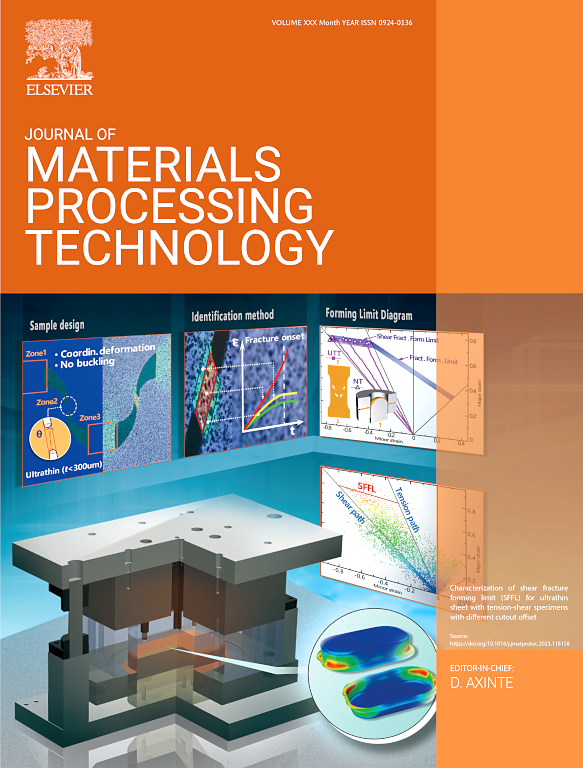Effect of closed-loop coaxial melt pool temperature control on thermal history and microstructure of nickel alloy 718 in directed energy deposition
IF 6.7
2区 材料科学
Q1 ENGINEERING, INDUSTRIAL
Journal of Materials Processing Technology
Pub Date : 2025-01-17
DOI:10.1016/j.jmatprotec.2025.118725
引用次数: 0
Abstract
Advanced materials, better control methods, and unique toolpath planning strategies have recently been enabled through development of novel, in situ monitoring techniques in laser powder-blown directed energy deposition (DED-LB). Specifically, closed-loop control schemes have benefitted from development of in situ monitoring techniques focused on melt pool measurements and control. Implemented closed-loop control algorithms have heavily focused on modulating laser power to influence melt pool size or temperature. While demonstration of controller performance is readily available, there are limited studies addressing the effect of local closed-loop melt pool control on bulk component temperature history, re-heating of previous layers, and resulting material structures. In this study, coaxial photodiodes were implemented as a functioning two-color pyrometer. The photodiodes were used in closed-loop control to maintain a melt pool temperature of 1500 °C in a multi-layered thin wall deposited with Nickel alloy 718 (IN718). A thermal history analysis using concurrent infrared (IR) imaging showed that local melt pool control mitigated heat accumulation and improved the uniformity of spatial thermal gradients. In situ heat treatment times relevant to IN718 were quantified, and it was demonstrated that local melt pool control minimized time spent in solidification. Subsequent microstructure analysis demonstrated that the dominant mechanism for smaller grain formation with laser power modulation was the inhibition of epitaxial growth coupled with a change in local thermal gradient rather than a change in local cooling rate for IN718. Grain morphology and size were more uniform and three times as many small grains were present when local melt pool control was used, but primary dendrite size and Laves particle characteristics largely remained the same. It is ultimately shown that future designs of controllers in DED-LB must consider microstructure evolution of the working material system to fully realize improved mechanical properties and higher quality materials in DED-LB.
求助全文
约1分钟内获得全文
求助全文
来源期刊

Journal of Materials Processing Technology
工程技术-材料科学:综合
CiteScore
12.60
自引率
4.80%
发文量
403
审稿时长
29 days
期刊介绍:
The Journal of Materials Processing Technology covers the processing techniques used in manufacturing components from metals and other materials. The journal aims to publish full research papers of original, significant and rigorous work and so to contribute to increased production efficiency and improved component performance.
Areas of interest to the journal include:
• Casting, forming and machining
• Additive processing and joining technologies
• The evolution of material properties under the specific conditions met in manufacturing processes
• Surface engineering when it relates specifically to a manufacturing process
• Design and behavior of equipment and tools.
 求助内容:
求助内容: 应助结果提醒方式:
应助结果提醒方式:


